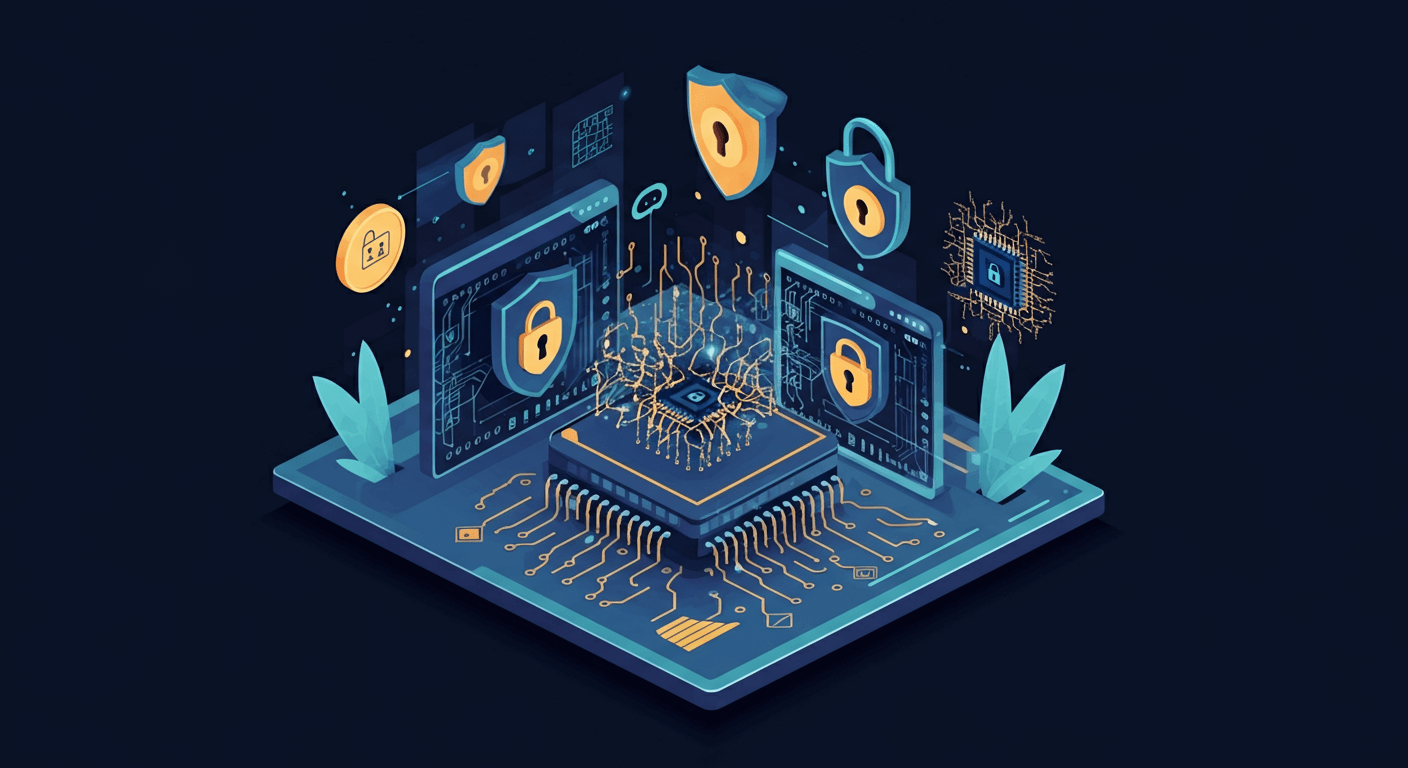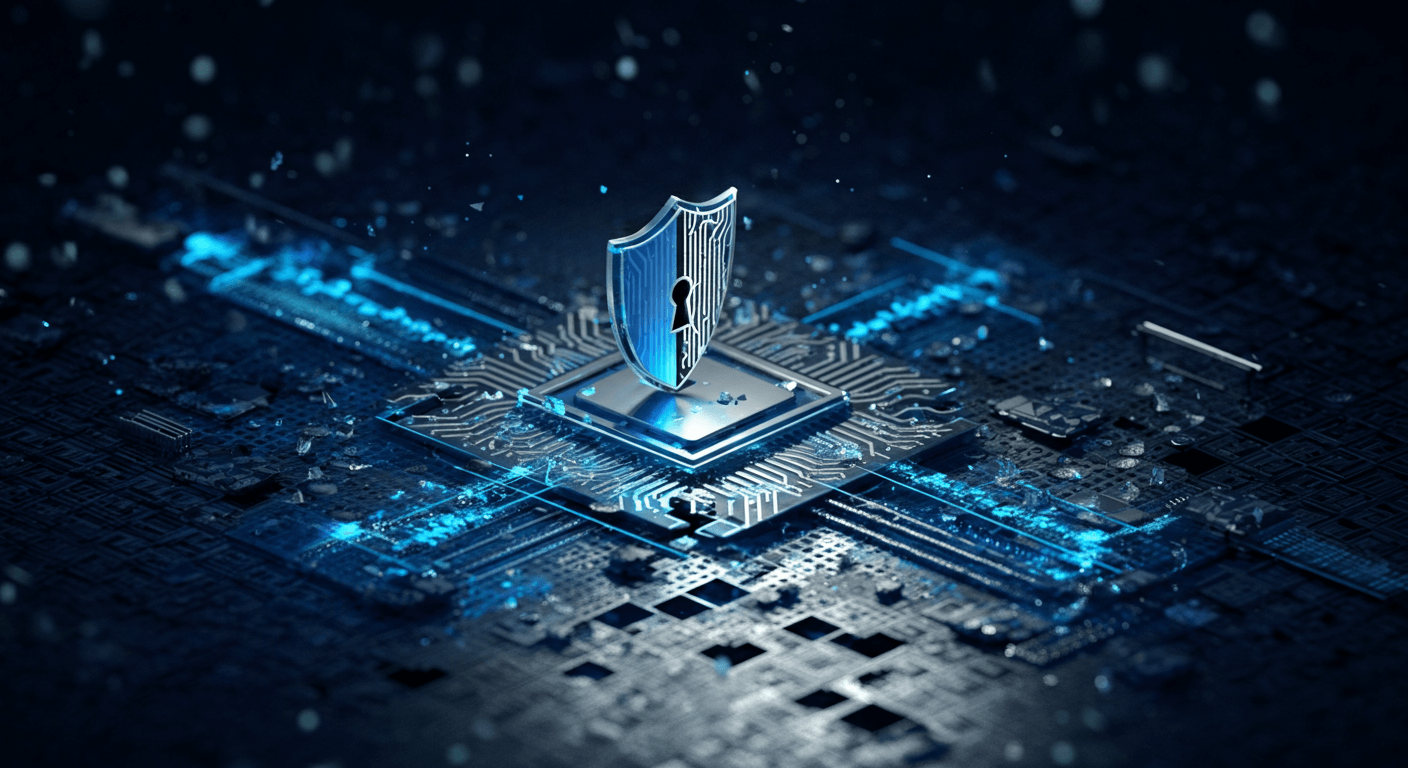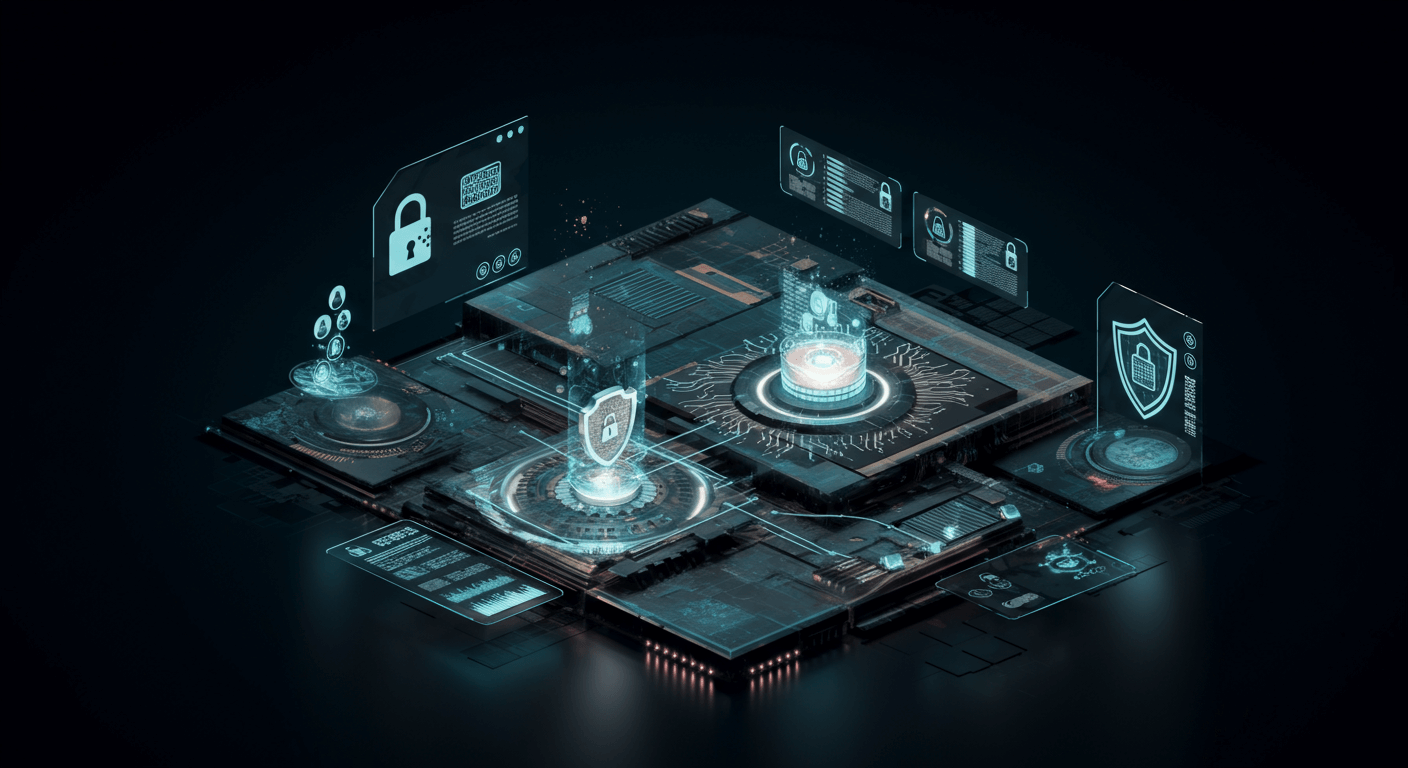Cybercriminals are evolving their tactics at breakneck speed. Meanwhile, traditional security measures struggle to keep pace with sophisticated attacks that can breach systems in minutes. This creates a dangerous gap that puts businesses and individuals at serious risk.
Artificial intelligence has emerged as a game-changing solution for cybersecurity challenges. AI-powered security systems can detect threats faster than human analysts, predict attack patterns, and respond to incidents in real-time. This technology is revolutionizing how we protect our digital assets.
This post explores how AI is transforming cybersecurity, the key benefits it offers, and practical ways you can implement AI security solutions. You’ll also learn about potential challenges and what the future holds for AI-driven cyber defense.
How AI is Revolutionizing Cybersecurity

Real-Time Threat Detection
AI systems excel at monitoring network traffic and identifying suspicious behavior patterns. Machine learning algorithms analyze millions of data points simultaneously, flagging anomalies that human analysts might miss.
These systems learn from historical attack data to recognize new threats. They can spot subtle indicators of compromise—like unusual login patterns or unexpected data transfers—before attackers establish a foothold in your systems.
Read More: AI vs. Cyber Threats: What’s Next for Digital Security?
Automated Incident Response
When threats are detected, AI can trigger immediate response actions. This includes isolating infected devices, blocking malicious IP addresses, and alerting security teams with detailed threat intelligence.
Automated responses happen in milliseconds, not minutes or hours. This speed is crucial when dealing with fast-moving threats like ransomware or data exfiltration attempts.
Predictive Security Analytics
AI doesn’t just react to threats—it predicts them. By analyzing attack trends and vulnerability patterns, AI systems can forecast where the next attack might occur.
This predictive capability helps security teams allocate resources more effectively. They can patch vulnerabilities before they’re exploited and strengthen defenses in high-risk areas.
Key Benefits of AI in Cybersecurity

Enhanced Detection Accuracy
Traditional security tools rely on signature-based detection, which only catches known threats. AI systems use behavioral analysis to identify previously unknown attacks.
This approach significantly reduces false positives while catching more genuine threats. Security teams spend less time investigating harmless anomalies and more time addressing real risks.
Scalable Security Operations
AI can process vast amounts of security data without fatigue or human error. This scalability is essential for large organizations that generate terabytes of log data daily.
As your organization grows, AI security systems can adapt and scale accordingly. They don’t require proportional increases in human resources to maintain effectiveness.
Cost-Effective Protection
While AI security solutions require initial investment, they often reduce long-term costs. Automated threat detection and response reduce the need for large security teams working around the clock.
The cost of prevention is typically far lower than the cost of recovering from a successful cyberattack. AI helps organizations avoid expensive incidents and regulatory fines.
AI Cybersecurity Applications
Network Security
AI monitors network traffic patterns to identify malicious activity. It can detect lateral movement by attackers, unusual data flows, and communication with known command-and-control servers.
Network AI systems create baseline profiles of normal activity. When behavior deviates significantly from these baselines, the system raises alerts and can automatically implement containment measures.
Email Security
Email remains a primary attack vector for cybercriminals. AI email security solutions analyze message content, sender reputation, and attachment behavior to block phishing attempts and malware delivery.
These systems can identify sophisticated spear-phishing attacks that target specific individuals. They examine linguistic patterns and sender behavior to catch emails that traditional filters might miss.
Endpoint Protection
AI-powered endpoint protection goes beyond traditional antivirus software. It monitors device behavior, process execution, and file system changes to identify malicious activity.
When suspicious behavior is detected, AI can isolate endpoints from the network, terminate malicious processes, and roll back harmful changes. This prevents malware from spreading to other systems.
Identity and Access Management
AI helps verify user identities by analyzing login patterns, device characteristics, and behavioral biometrics. It can detect account takeovers and unauthorized access attempts.
Risk-based authentication powered by AI adjusts security requirements based on contextual factors. Low-risk activities proceed smoothly, while suspicious activities trigger additional verification steps.
Implementing AI Cybersecurity Solutions
Assess Your Current Security Posture
Before implementing AI security tools, evaluate your existing defenses. Identify gaps in coverage and areas where AI could provide the most value.
Consider factors like your organization’s size, industry, regulatory requirements, and risk tolerance. This assessment helps you prioritize AI investments and choose appropriate solutions.
Choose the Right AI Security Tools
Different AI security solutions address different threats. Email security AI focuses on communication threats, while network AI monitors infrastructure.
Look for solutions that integrate well with your existing security stack. The best AI tools enhance rather than replace your current defenses.
Plan for Integration and Training
AI security systems require proper configuration and ongoing management. Plan for integration with existing security information and event management (SIEM) systems.
Train your security team on AI tool capabilities and limitations. Human oversight remains crucial for validating AI decisions and handling complex incidents.
Start with Pilot Programs
Begin with small-scale deployments to test AI effectiveness in your environment. Monitor performance metrics and adjust configurations based on results.
Pilot programs help you understand how AI fits into your security operations before making larger investments.
Challenges and Considerations
Data Quality Requirements
AI systems need high-quality training data to function effectively. Poor data quality can lead to inaccurate threat detection and excessive false positives.
Ensure your organization collects comprehensive security logs and maintains data hygiene practices. Clean, relevant data is essential for AI success.
Adversarial AI Attacks
Cybercriminals are developing techniques to fool AI security systems. Adversarial attacks manipulate AI inputs to avoid detection or trigger false positives.
Stay informed about emerging adversarial techniques and choose AI solutions that include defenses against these attacks. Regular model updates help maintain effectiveness.
Privacy and Compliance Concerns
AI security systems often require access to sensitive data for analysis. This raises privacy concerns and regulatory compliance questions.
Work with legal and compliance teams to ensure AI implementations meet regulatory requirements. Consider privacy-preserving AI techniques when appropriate.
Human-AI Collaboration
AI augments human capabilities but doesn’t replace human judgment entirely. Security teams must learn to work effectively with AI tools.
Establish clear procedures for when human intervention is required. Maintain human oversight for critical security decisions and incident response activities.
The Future of AI Cybersecurity

Advanced Threat Intelligence
AI will become more sophisticated at correlating threat intelligence from multiple sources. This will provide richer context for security decisions and improve threat attribution.
Machine learning models will better understand attacker motivations and tactics, enabling more effective defensive strategies.
Autonomous Security Operations
Future AI systems will handle more security tasks independently. This includes automated vulnerability management, incident investigation, and even some aspects of threat hunting.
Autonomous security operations will free human analysts to focus on strategic security initiatives and complex problem-solving.
Quantum-Safe Security
As quantum computing advances, AI will play a crucial role in developing and implementing quantum-resistant security measures.
AI will help organizations transition to post-quantum cryptography and identify systems vulnerable to quantum attacks.
Building Your AI-Powered Security Strategy
The cybersecurity landscape continues to evolve rapidly, and AI has become an essential tool for staying ahead of threats. Organizations that embrace AI security solutions gain significant advantages in threat detection, response speed, and operational efficiency.
Success with AI cybersecurity requires careful planning, proper implementation, and ongoing optimization. Start by assessing your current security needs and identifying areas where AI can provide the most value.
Consider partnering with experienced AI security vendors who can guide your implementation and provide ongoing support. The investment in AI cybersecurity pays dividends through improved protection and reduced incident response costs.
Take action now to evaluate AI cybersecurity solutions for your organization. The threat landscape won’t wait—and neither should your defenses.
You can also read: How AI Cybersecurity Tools Are Transforming Small Businesses
